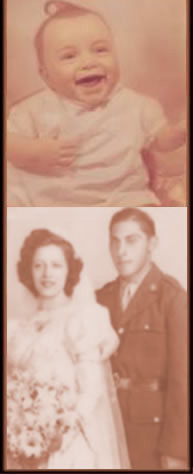April
2006
The Statue of Liberty
to do a "360"?

*
*
*
Thank You For
Smoking: The Other
Buckley
All know of the father: William F. Buckley Jr.
Fewer know of the son: Christopher Buckley.
But hopefully, this will begin to be remedied with the current
release of the film Thank You For Smoking,
based on the son’s best selling novel of twelve years
ago. Herein lies that rare case, where the style and spirit
of a wonderful book, has been faithfully transported to the
screen.
We had first gotten to meet
Christopher Buckley almost 15 years ago, when we trafficked
in the advertising trade. He was (and still is) the Editor
of Forbes FYI magazine; we were buyers of ad space.
Beyond a buyer-seller relationship, we had begun a personal
correspondence on various and sundry matters. A gracious man,
he was kind enough to offer positive input to a then fledgling
poet. (And he liked our Catholic school penmanship).
Mr. Buckley is beyond prolific.
In addition to his many novels and collections of essays (…Smoking,
No Way To Treat a First Lady, Wry Martinis, Little Green Men,
Florence of Arabia, etc) he is a frequent contributor
to many magazines and newspapers, including The New Yorker
(in which over 50 of his comic essays have appeared), The
New York Times, Washington Post, Wall St. Journal, The Atlantic
Monthly, Vanity Fair, Time, etc., etc., etc. The literary
world, long aware of his talents, awarded him the ninth annual
Thurber Prize for American Humor in 2004.
As if that were not enough,
and in the proverbial case of perhaps an apple not falling
too far from the tree, he is an engaging public speaker in
much demand.
But for us, the “Quintessential
Christopher,” is best illustrated by a national media
faux pas he inadvertently caused many years ago. To quote
briefly from a NY Times account of the episode:
“In 1991, Mr. Buckley
published a story in Forbes FYI reporting
that the cash-strapped Ministry of the Interior in Moscow
was now
prepared to sell the embalmed remains of the founder of
Marxism-
Leninism to the highest bidder: ‘Obviously, the
Lenin corpse is not
for everyone (Buckley wrote). . . . But the item is fairly
compact
and could be accommodated to fit in most large dens.’
Peter Jennings
faithfully relayed the item on ABC's World News
Tonight.”
To Christopher Buckley
we say: Thank You For Satirizing.
*
*
*
Short-Poem-of-the-Month
Club
The Wine Turns
Once we waxed wise on
what wine went with what.
Red
meat
white fish!
Redro eht esrever
ot
emoc evah ew.
Ron
Vazzano
*
*
*
Da
Cipherin’ Da Vinci
One good offshoot to all of the hoopla
concerning The Da Vinci Code, is
a renewed interest in Leonardo Da Vinci himself. There seems
to be a plethora, a cornucopia—a veritable plethorius
cornucopium— of newly published and reissued books
about this true genius. Math and the Mona Lisa: The Art
and Science of Leonardo Da Vinci (Smithsonian Books),
being the latest book to hit the stores.
But a favorite of ours that
we read a few years ago, has the unlikely title of How
to think like Leonardo da Vinci: Seven Steps to Genius Every
Day (1998). This daunting imperative hangs on
the question:
“Can the fundamentals
of Leonardo’s approach to learning and
the cultivation of intelligence be abstracted and applied
to inspire
and guide us toward the realization of our own full potential?”
A mouthful indeed. But obviously,
author Michael J. Gelb, in “drawing on Da Vinci’s
notebooks, invention and legendary works of art,” has
answered the question with a resounding “yes!”
What we love about this book,
is that not only was it interesting, but applicable.
Making no claims to genius ourselves
(we still cannot operate the TiVo system in our home…
requiring the help of spouse, offspring and the family dog
), we have instinctively been trying to practice many of these
seven principles for years.
They particularly seem to resonate
with poetry— the reading and writing thereof. (see #7
in particular). Though we can also remember using some of
them in business presentations as well.
We pass along to you, this Holy
Grail:
1. Curiosità—
an insatiably curious approach to life and unrelenting quest
for continuous learning
2. Dimostrazione
— a commitment to test knowledge through experience,
persistence, and a willingness to learn from mistakes
3. Sensazione
— the continual refinement of the senses, especially
sight, as the means to enliven experience.
4. Sfumato
(literally “Going up in Smoke”) — a willingness
to embrace ambiguity, paradox, and uncertainty.
5. Arte/Scienza
— the development of the balance between science and
art, logic and imagination. “Whole-brain” thinking.
6. Corporalita
— the cultivation of grace, ambidexterity, fitness
and poise.
7. Connessione
— a recognition of and appreciation for the interconnectedness
of all things and phenomena.
For further information, or
to purchase the book, you can click on this ungodly “code”
below.
http://www.amazon.com/gp/product/0440508274/103-1350871-9819838?v=glance&n=283155
*
*
*
By the way…
While Miss Liberty does indeed stand in New Jersey’s
waters, we must confess to our total fabrication of the opening
piece in this Muse-Letter. It was all done in the
spirit of…

*
*
*
The End
|










